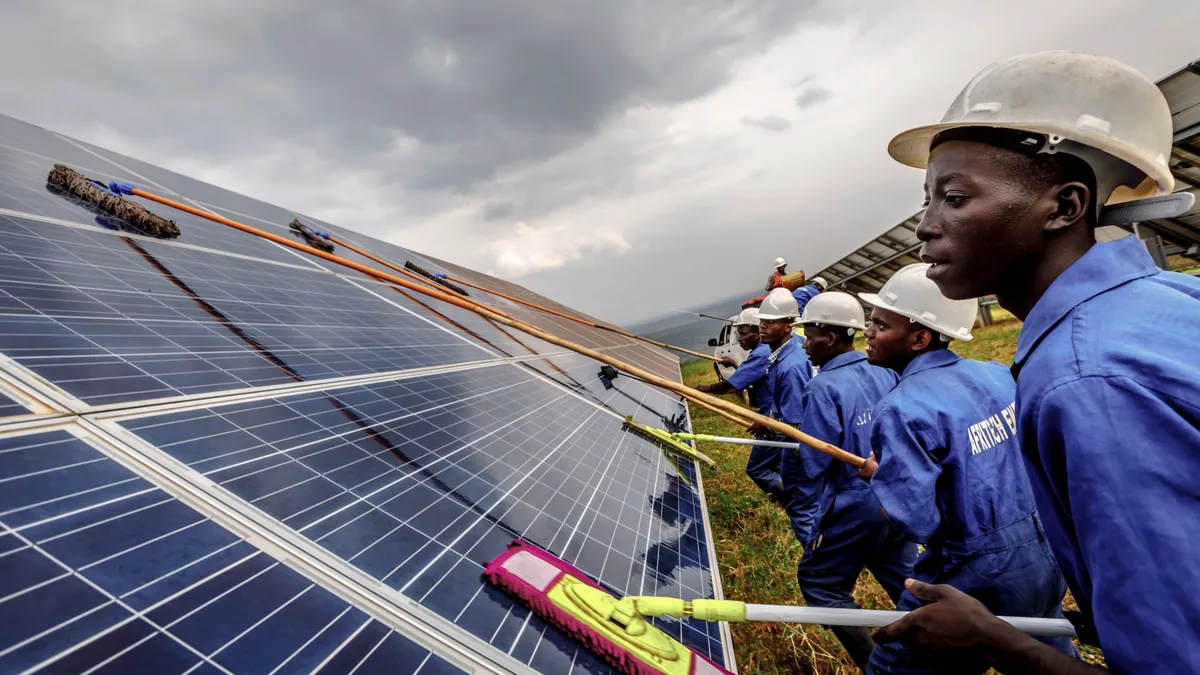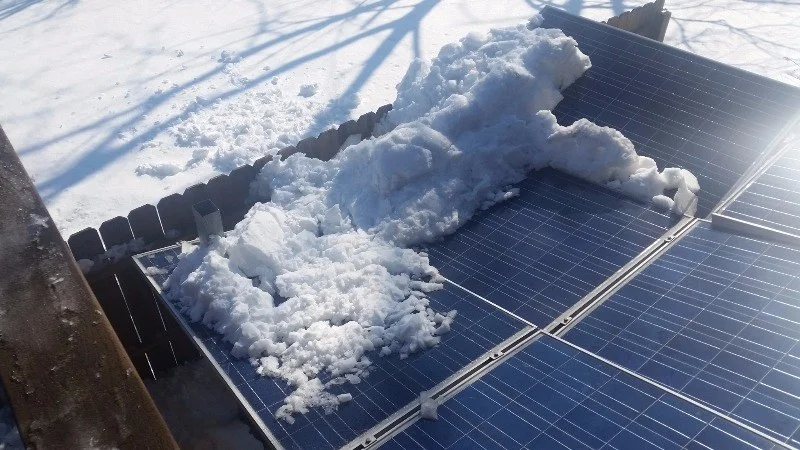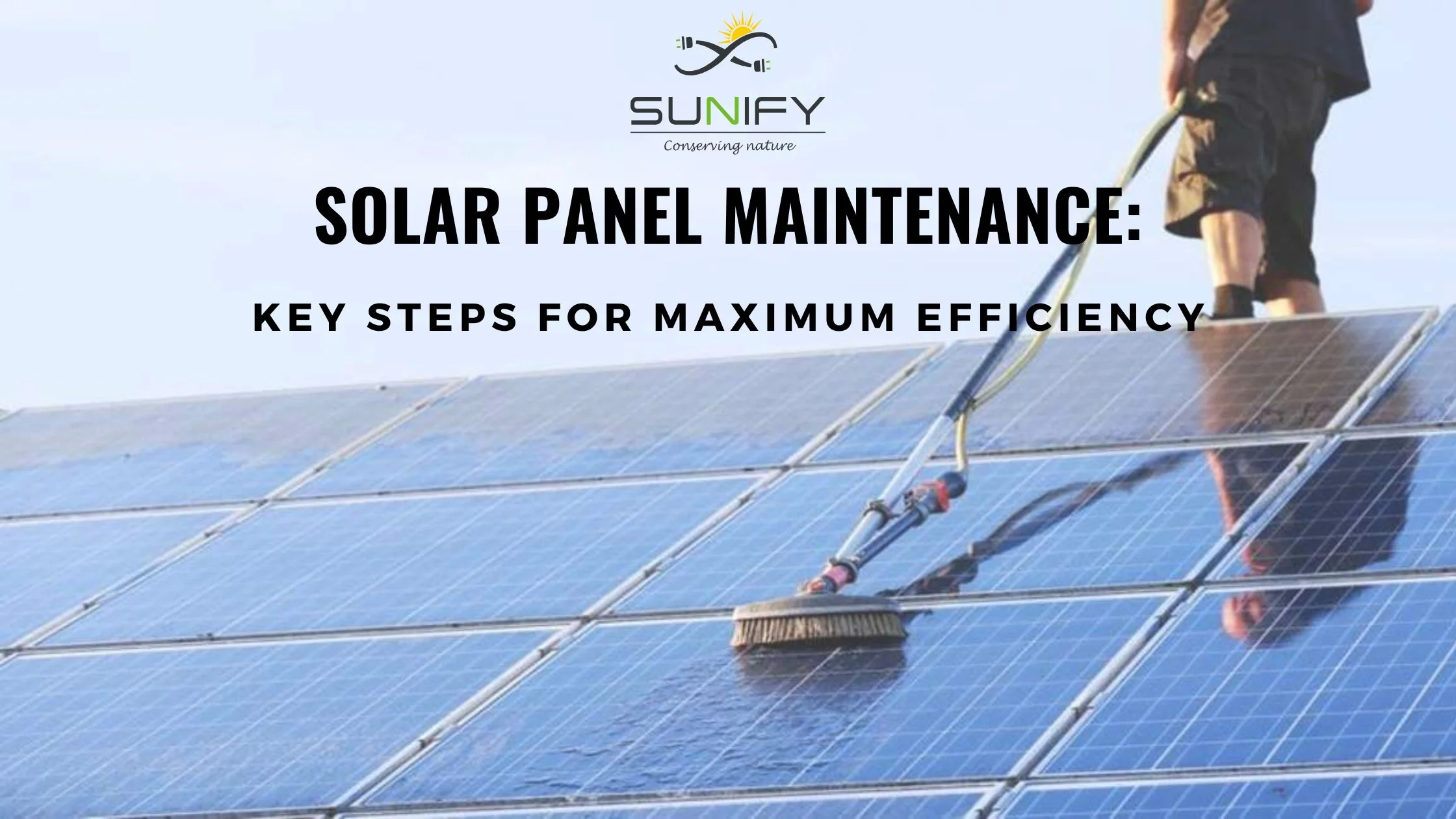
Connect With Our Team
Solar panels are a valuable investment in clean and renewable energy. Although designed to be low maintenance, they still require regular care to optimize their performance and increase the service life. With improper maintenance, dirt, debris and minor damages can build up and thus diminish the output of energy and the efficiency of a whole system. This blog tells you how to keep your solar panels in top condition, protecting your investment and getting the most from the sun all year through.
Why Is Solar Panel Maintenance Important?
Solar panels are usually quite rugged and resistant to the elements, but efficiency can decline if maintenance isn’t given. Banked at an angle, dust, pollen, pollution, bird feces and even the light reflecting off snow all have the potential to block sun from the photovoltaic (PV) cells, reducing energy production. Regular maintenance doesn’t just keep output at its optimum, but it also helps prevent things like cracks or corrosion, which can lead to expensive repairs. It’s also being proactive with upkeep: Getting the best return on your investment, as well as decreasing your carbon footprint.

Key Benefits:
-
Consistently high energy production and improved system performance
-
Early detection of minor issues before they escalate into major repairs
-
Prolonged lifespan of panels, inverters, and other system components
-
Maximized financial returns from your solar power system over the years
1. Regular Cleaning of Panels
Cleaning your solar panels is an incredibly simple yet very effective maintenance task. A thin layer of dirt or dust diminishes solar energy absorption by up to 25 percent, cutting directly into your electricity production. Cleaning also helps avoid the generation of buildup that can scratch the panel surface or create hotspots, which deteriorate the cells over their lifetime.
Tips for Cleaning:
-
Use soft, non-abrasive sponges or brushes with gentle soap and water. Avoid harsh chemicals that can damage panel coatings.
-
Clean panels during cooler parts of the day, early morning or late evening to prevent rapid evaporation, which could leave streaks or spots.
-
If cleaning rooftop panels, ensure safety by using appropriate gear or consider hiring professionals.
-
Homeowners in dry or dusty regions should clean panels every 3-6 months, while those in areas with frequent rain might clean less often but still perform visual checks regularly.
2. Periodic System Inspection
Performing regular visual and technical inspections allows you to identify problems early that will keep your solar system safe and efficient. Search for physical damage, wear, and failure to electrical performance or safe operation.
What to Check:
-
Glass panels for cracks, chips, discoloration, or fogging that can indicate moisture intrusion or damage.
-
Wiring for loose connections, exposed cables, or corrosion which can cause electrical faults or energy loss.
-
Mounting hardware and frames for rust, loosening, or bending due to weather or aging.
-
The tilt and orientation of panels to ensure they are optimized for maximum sun exposure throughout the year.
Annual professional inspections are highly recommended to ensure all components meet safety and operational standards and to maintain warranty compliance.
3. Monitor System Performance
Today, a modern solar system can come with smart monitoring tools that offer real-time data as far as production is concerned. Monitoring consistently allows us to catch inefficiencies early enough for us to intervene before performance plummets dramatically.

Signs of Trouble:
-
A sudden or gradual decline in electricity generation compared to historical data or expected values.
-
Error messages, warning lights, or fault codes on inverters or monitoring apps.
-
Fluctuations in output that don’t correspond to weather conditions or seasonal changes.
-
Keeping a close eye on system metrics allows you to quickly identify shading issues, inverter problems, or panel malfunctions, helping maintain a stable energy supply and avoid costly downtime.
4. Trim Nearby Trees and Clear Debris
Solar panels can output much less if they are partially or completely blocked by shadows created by trees, buildings or other obstructions. The amount of sun the surfaces receive, as well as the dirt buildup and dirt that is going to be left behind from the falling leaves as everything goes to sleep, also plays a role.
Steps to Take:
-
Regularly trim branches and vegetation that shade panels during peak sunlight hours.
-
Remove debris such as leaves, twigs, nests, or dirt that accumulates on or around panels.
-
Ensure rainwater can easily wash off surface dust and prevent water pooling around the mounting structure.
-
Keeping the area around your panels clear not only maximizes sunlight exposure but also reduces the risk of physical damage or pests nesting nearby.
5. Handle Snow and Storm Damage
Snow accumulation can temporarily block out sunlight in colder regions, where that can impact energy production. Severe weather events like hailstorms, heavy winds, or lightning strikes can cause physical damage.

After-Weather Checks:
Gently remove snow from panels with a soft broom or brush if safely accessible. Avoid using sharp tools that may scratch or crack the glass.
-
Inspect for signs of panel displacement, cracked glass, or loosened mounts after storms.
-
Ensure all electrical connections remain intact and there’s no visible corrosion or water damage.
-
Preventative checks after adverse weather events can help you detect damage early and arrange prompt repairs, ensuring your system’s resilience and longevity.
6. Professional Annual Maintenance
However, getting regular DIY checks and cleaning is important, but also regularly having certified solar technicians do your annual health check for your entire system will give it the kick it truly needs. Specialized equipment is used by professionals to determine performance and safety beyond that which can be seen by the unaided eye.
Professional Services Include:
-
Testing system voltage and current for optimal functioning.
-
Inspecting and servicing the inverter, a crucial system component.
-
Tightening or replacing electrical connections to prevent power loss or hazards.
-
Evaluating mounting integrity and structural stability under environmental stresses.
Regular professional maintenance helps maintain manufacturer warranties, improves safety, and maximizes long-term energy yield.
Quick Solar Panel Maintenance Checklist
-
Clean solar panels with mild soap and water every 3-6 months
-
Inspect for cracks, corrosion, and loose wiring quarterly
-
Monitor energy output regularly
-
Trim nearby trees and vegetation to avoid shading
-
Clear snow gently in winter
-
Check for damage after storms
-
Schedule a professional inspection annually
-
Remove debris and nests around panels
-
Use only soft, non-abrasive cleaning tools
-
Verify correct panel tilt and alignment
Looking for Reliable Solar Solutions?
Choosing trusted solar panel manufacturers like Sunify Solar and maintenance service providers ensures you get high-quality panels, expert installation, and ongoing support. Through this partnership, you’re guaranteed a straightforward solar system installation that will operate flawlessly with easy access to efficient replacement parts, upgrades and even warranty services.
Conclusion
To ensure that your solar power system performs as efficiently as long and in the manner you’ve planned, proper solar panel maintenance is important. You maximize your solar setup’s energy output by consistently having your panels cleaned, system components inspected, performance monitored, shading managed and even scheduling your professional check-ups. However, staying proactive with maintenance doesn’t just protect your equipment from potential damage, but also helps to provide renewable energy reliably and as safely, cleanly and efficiently as possible. By investing a little bit of time into these simple maintenance steps, your solar panels will live a long and happy life and your electricity bills will be low for years to come.
Recently Posted
Whatsapp Chatx
Hi! Click one of our representatives below to chat on WhatsApp or send us email to solar@sunifysolar.in

|
************** +91 81414 55503 |

We will love to hear from you!






